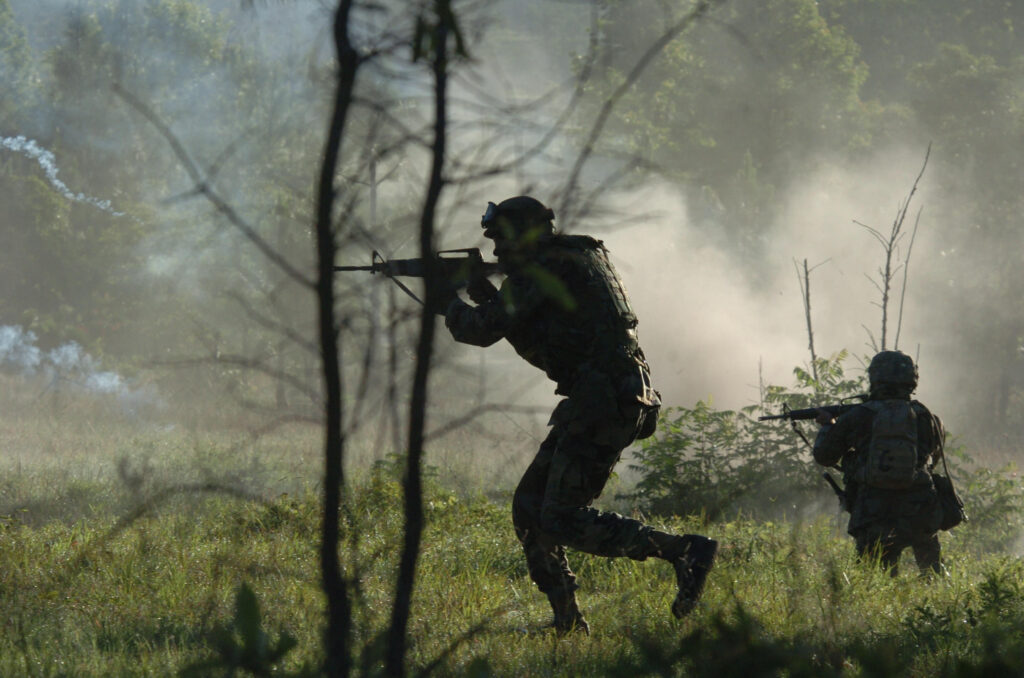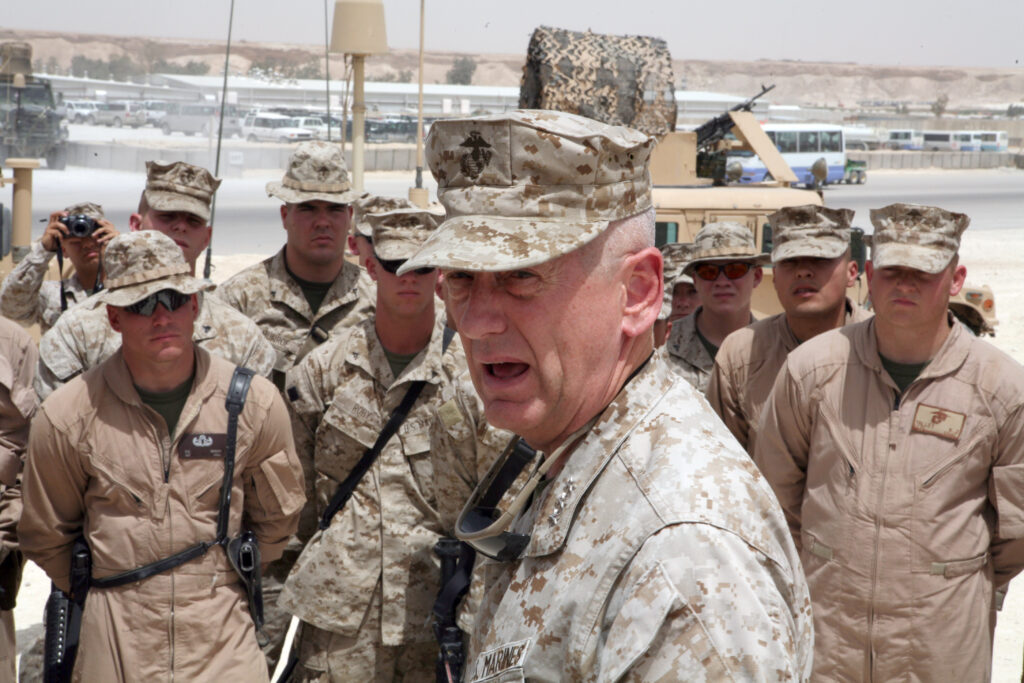By SYDNEY J. FREEDBERG JR
 “All too often when we bring things up inside the Beltway, it immediately devolves to material and programs and technology," said Scales. "What we hope comes out of this is not just new machines but new ways of thinking about warfare at the tactical level.” Infantry training at the Joint Readiness Training Center, Fort Polk, La. ARLINGTON: Finding $2.4 billion for new infantry equipment was just the start for Defense Secretary Jim Mattis’s Close Combat Lethality Task Force. Now they’re taking on the hard part:getting the military to stop wasting the troops’ time.
“All too often when we bring things up inside the Beltway, it immediately devolves to material and programs and technology," said Scales. "What we hope comes out of this is not just new machines but new ways of thinking about warfare at the tactical level.” Infantry training at the Joint Readiness Training Center, Fort Polk, La. ARLINGTON: Finding $2.4 billion for new infantry equipment was just the start for Defense Secretary Jim Mattis’s Close Combat Lethality Task Force. Now they’re taking on the hard part:getting the military to stop wasting the troops’ time.
Robert Wilkie
PowerPoint briefings on personal hygiene, guard duty at base gates, shuffling troops from unit to unit and base to base every few years — all these things take away from building tight-knit teams and training them for combat. The goal, in brief, is to purge bad habits left over from the draft era, when conscripts were treated as free labor and infantrymen, in particular, as unskilled grunts. Instead, the military should treat Army and Marine infantry like fighter pilots, as highly skilled professionals.
Speaking Wednesday at the Association of the US Army, undersecretary for Personnel and Readiness Robert Wilkie pointed out six problems the task force wants to fix, any of which would be a major effort on its own:
End death by PowerPoint: Over the years, well-meaning bureaucrats have layered on one training requirement after another — briefings on everything from highway safety to personal hygiene– that it cuts into training for actual combat. Wilkie, a reservist, estimated he spends 4.5 days of his 14-day annual training on such briefs. Now the Secretaries of the Army, Air Force, and Navy(which includes Marines) have all agreed to systematically cut back these mandatory training requirements.
Stop peeling potatoes: When commanders need someone to guard the base gates, run the gym, or perform some other mundane task, they often look to the infantry. After all, if you take mechanics or other technical troops away from their tasks, equipment quickly starts breaking down, but if you take grunts away from training, the damage isn’t obvious until wartime. The task force is working on a “workforce rationalization plan” to have civilians do such work so soldiers and Marines can concentrate on combat.
Train like the pros: As a Marine Corps general, Mattis once noted that infantry training hadn’t changed much since World War II, which he found unacceptable. Special Operations has led the way in borrowing training techniques from major league sports — personalized coaching, scientific nutrition, and constant repetition with careful monitoring of both physical and cognitive performance. Not everyone can qualify for special forces, but regular Army and Marine Corps infantry can replicate this kind of intensive, scientific training.
Add virtual training: Instead of reading PowerPoint or peeling potatoes, troops need to spend their time on realistic training — but field exercises are expensive, time-consuming to set up, and limited to the environment around the base. Fighter pilots and vehicle crews use simulators to train over and over in a wide variety of scenarios, many too dangerous for real-life training, before they go to the field. The Pentagon is now looking at VR and augmented reality technologies for the infantry as well. Mattis wants infantry to fight “25 bloodless battles” before they ever face real life-or-death combat, Wilkie said.
Report real readiness: Today, units spend a great deal of time counting the countable — how many troops they have, how much equipment and supplies — but that doesn’t capture the qualitative factors that make a unit ready for combat. “Clearly at the small unit level, the readiness reporting system fails us,” the chair of the task force’s advisory board, retired Maj. Gen. Bob Scales, said. He recommends a system that measures how much time troops spend in realistic training and how many have qualified in key skills. Wilkie’s office is working with all the services on how to assess real readiness.
Keep troops together: Since World War II, the military has treated troops as interchangeable parts, moving individuals from job to job, unit to unit, base to base. Career commissioned and non-commissioned officers in particular pay a penalty for staying too long in one job under a system known as “up or out.” That might have worked in the draft era, Wilkie said, when thousands of unmarried conscripts came in and out every year, but it doesn’t fit a force of long-service volunteers with families. It also breaks up the tight-knit teams that make a unit effective in battle.
This reform will be the hardest because it requires not just new orders in the Pentagon but revising venerable statutes like the Defense Officer Personnel Management Act (DOPMA) of 1980. “We can work with Congress to address that,” Wilkie said, “keeping units together longer, creating the team muscle memory necessary for success.”

Then-Lt. Gen. James Mattis in Iraq.
The task force doesn’t have any specific legislative requests for Congress, yet, but Wilkie is already explaining the overall idea. “I’ve already begun evangelizing this concept with the Congress,” he said. “I met today with several United States senators, also last Monday with staffs.”
Army marksmanship simulator. Such systems can train specific tasks but not the whole, highly physical skillset required for infantry combat, which is why the military is looking into augmented reality (AR).
Defense Secretary Mattis has empowered Wilkie’s office, the undersecretariat for personnel and readiness, to take the lead on the task force. (The first, equipment-focused phase was lead by the Cost Assessment & Program Evaluation office, CAPE). “Secretary Mattis has invested a great deal of time and effort into this undersecretariat,” Wilkie said. “He has tasked us with gauging the readiness of the entire force, enforcing decisions, making changes in force structure. We are no longer just an oversight body, because this is the Secretary’s priority.”
“I take Secretary Mattis at his word and to heart that this is the effort he wants to leave behind no matter now long his service as secretary of defense,” Wilkie said.
But how, I asked Scales and Wilkie, will the task force and the personnel & readiness office compete for attention with multi-billion dollar acquisition programs?
“Sydney…you’re a heck of a straight man,” Scales replied. “All too often when we bring things up inside the Beltway, it immediately devolves to material and programs and technology, (but) we don’t want this to just be an acquisition program, we want this to be a catalyst for a transformation of a level of war that has received so little attention….What we hope comes out of this is not just new machines but new waysof thinking about warfare at the tactical level.”
No comments:
Post a Comment